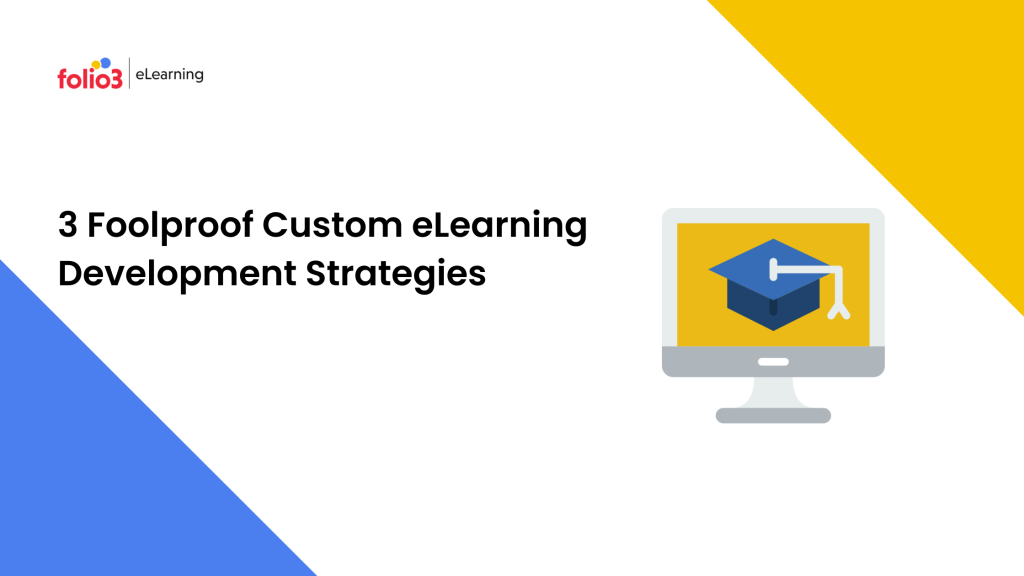
The first thing we want in a custom eLearning development solution is to maximize learner engagement as well as knowledge retention. The good news is that it can be fairly easy to create a solution that maximizes engagement for learners, which also helps them retain whatever they have learned. The even better news is that we are going to talk about three eLearning strategies to help maximize engagement and pave the way to maximum knowledge retention.
For this article, we aren’t going to be delving into details about learning theories and how to choose the one that helps drive engagement because those can be relative and the one that works for you may not necessarily work for someone else. We will be talking about simple, point-blank eLearning strategies and tools that work no matter which learning theory you adopt.
Let’s Grow Out of The PowerPoint Era
I hope we can agree on one thing. The PowerPoint era is gone. Custom eLearning development has evolved far beyond what PowerPoint presentations and slide decks could teach. Whether your target audience is employees who are taking a training course or even students enrolled in a graduate program, they want to be able to interact with the course content because it helps retain the content better! Simple bulleted lists and high-resolution photos just don’t make the cut anymore. The learners today are not impressed with these simple presentations. They want something that excites them and is actually worth their while.
So What Are these Custom eLearning Development Strategies?
Let’s get right to it and talk about those three tried and tested eLearning strategies that help drive learner engagement. Why are they foolproof, you ask? They are foolproof because they have been tried and tested multiple times in multiple interactive eLearning solutions and have worked to not only maximize learner engagement but also retention levels as proven by the assessments taken by them.
1) Dials & Sliders
Just like we mentioned that it’s time to grow out of the PowerPoint era, it is also time to stop thinking of the “Click here to learn more” button as the only interactive means in a software solution. Let’s make this simple. Learners today get bored easily. They live in the age of smartphones and the metaverse and they need more than just buttons to keep them engaged. We need to keep improvising so that they remain convinced.
One of the marketing rules of engagement states that we have to predict the learner’s behavior to be able to engage them and that is exactly what we are doing here. Smartphones require less tapping and more scrolling. This is where dials and sliders come into action. Dials and sliders are proven to work better on mobiles and smart devices and have better usability than buttons.
They are a welcome break from the boring monotonous buttons usually used, and you can use them to achieve several goals.
- To build a timeline with individual images or text popups or slides for different dates as you drag the slider.
- To describe and highlight crucial information.
- To describe a process and highlight the progression as it goes along.
- For assessments and timed questionnaires.
2) Voiceovers
You know about the use of audio and video modules in your eLearning solution and how they can improve engagement as well as retention, but do you know about the power of voiceovers? It is such a simple tool, yet it is often overlooked in the creation of custom eLearning development content and software. Using different voices and tones of voice is known to increase engagement in learners. The human voice helps the learner relate to what is being taught and also helps him or her to retain what they have heard.
We can use voiceovers in several ways to help increase learner engagement including audio lectures that the learner can listen to at his or her own pace. Voiceovers, as an eLearning strategy, can also be used in assessments for instance if the learner is taking a course on hiring and has to listen to interviews to gauge the best profile to hire, it is not just the content that matters but also the manner of delivery and the tone of voice. However, in cases where the learner has to read along with listening to audio does not have higher rates of engagement. In fact, such a forced arrangement has actually been shown to decrease retention in learners. You can use voiceovers to maximize engagement in the following ways:
- Use varying tones to deliver different messages and maximize engagement.
- Break the monotony of a single voice by introducing different narrators for audio lectures
- Use character voices and build characters when narrating problems and solutions in a case study to help the learner understand and retain better.
3) Sorting & Labeling
Engagement needs interaction and for some reason, we have limited the interaction in our theoretical custom eLearning solutions to the same old multiple-choice as well as true and false questions. The learners have gotten bored doing the same thing using their tablets and phones that they have already been doing on paper all their life in assessments and exams.
This is where sorting and labeling emerge as heroes. Come to think of it, it is actually one of the simplest eLearning strategies but it truly does work. When learners are given the option of dragging and dropping labels and sorting sections using the drag and drop feature, they feel like they have something new and different to do. Here are some ways you can use sorting and labeling to maximize learner engagement:
- To create interactive assessments with sorting and building so the learner can test himself on how much he has learned so far.
- To teach parts of a product or process, you can use labeling and ask the learner to label the different parts.
- To enhance the user interface and make the eLearning solution fun and interactive.
- To enhance true and false questions and make them more interactive than tapping true and false.
But are these simple custom eLearning development strategies worth it?
I’m sure you’re wondering this, so let’s bring it to the table. Are these simple eLearning strategies and tools even worth it? When learners are adults and not kids, why do we have to put in an effort to keep them engaged? Don’t they know they signed up for this? It’s not like they’re being forced to learn anything.
You know what? You’re right. But it isn’t that simple. Even as adults, we often sign up and install applications to learn something but then give up somewhere in the middle because it can’t keep us engaged. These strategies help retain adults like us for much longer even if not for the entire duration of the course. But the question still remains: Is it worth it? We definitely think it is, which is why we are writing about tried and tested tools, but if you’re unsure, we know how you can ascertain if they’re worth the effort for you! You can use an eLearning development calculator to calculate the cost and quickly give you an estimate of the time and cost of any effort you make in building your perfect custom eLearning development solution.










